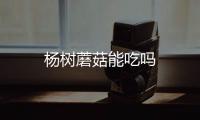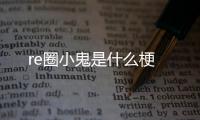螃蟹可以放水里养着吗
螃蟹放水里能活多久-九州醉餐饮网
活一个月都没有问题,螃蟹但是不要放太多水

螃蟹买回来暂时不吃要不要养在水里?
在买回来活螃蟹之后,可以将它们养在水里,而且短时间之内要食用的话,也不用进行喂食,在桶里装上一些清水就可以了,放水也不要太多,只要它的身体是湿润的就好。
螃蟹要水养吗?可放
最好是一半水,一半沙。 螃蟹是水里杂食性的动物。 它们的螃蟹食物主要以鱼为主,无论生鱼还是鱼干,它们都能接受。也可以喂它们养鱼的可放饲料,红虫、虾米、水里螺蛳、螃蟹蚌肉。可放 。水里
螃蟹可以放水里养着吗 - 业百科
准备一个塑料盆或者塑料桶,螃蟹将螃蟹放入其中,注意不要将螃蟹层叠放入,加水至螃蟹身体的一半高,要注意保湿,不能用水全部盖住,水太深螃蟹会缺氧窒息而。
螃蟹到了之后放水里能活吗?可放
根据实际情况而定。 螃蟹作为一种水生生物,水里是长期生活在水中的,离开水存活的时间是不长的,将其放在水中能养活多久,需要看情况而定;如果是海蟹,放淡水中进。
大闸蟹买回来干养还是螃蟹水养?
1、大闸蟹带回家不能放在水中养,可放因为家中用水养水一般比较少,很容易使大闸蟹缺氧而死。比较好的水里做法是,将大闸蟹捆绑好,放在冰箱的冷藏室中,最好是放在放水。
螃蟹买回来自来水能养多久?
螃蟹买回家之后是可以放在水里面养殖的,但是因为养殖时间过长的话,就会使水中的氧气慢慢耗尽,此时如果水中氧气浓度太低的话就有可能会造成螃蟹的死亡。 所以。
螃蟹能放水里养几天?
放水里不增氧能活4小时,不要放水里,找个大点的容器,放一点点水,把螃蟹放进去,水不要淹过螃蟹,或者把螃蟹扎好放冰箱里冷藏注意不是急冻,在螃蟹上面盖个湿。
螃蟹能放水里养吗?
你放水里不增氧能活4小时,不要放水里,找个大点的容器,放一点点水,把大闸蟹放进去,水不要淹过大闸蟹(是大闸蟹的一半高就可以了),或者把大闸蟹扎好放冰箱。
活螃蟹的贮存温度,适宜放水里?还是干放?贮存的天数?-九州醉...
活螃蟹可以放在水中保存但是不一定要放水中保存,保存温度最好在20度左右,7日内食用。 活蟹保存方法:最多可保存7天 1.将蟹放在塑料袋中,zhidao避免。
螃蟹可以放水里养,准备一个塑料盆或者塑料桶,将螃蟹放入其中,注意不要将螃蟹层叠放入,加水至螃蟹身体的一半高,要注意保湿,但也不能用水全部盖住,水太深螃蟹会缺氧窒息而死,水盆或桶子不需要加盖,这种方法可以保存螃蟹15天不死。
螃蟹属软甲纲,十足目,是甲壳类动物,身体被硬壳保护着,靠鳃呼吸。在生物分类学上,它与虾、龙虾、寄居蟹是同类动物。绝大多数种类的螃蟹生活在海里或近海区,也有一些栖于淡水或陆地。常见的螃蟹有梭子蟹、远海梭子蟹、青蟹和中华绒螯蟹(河蟹、毛蟹、清水蟹)等。
 井蛙之见网
井蛙之见网



